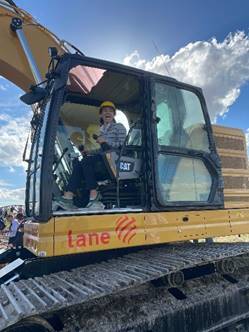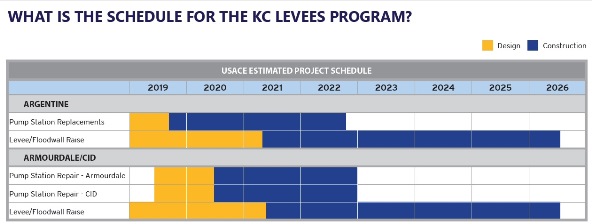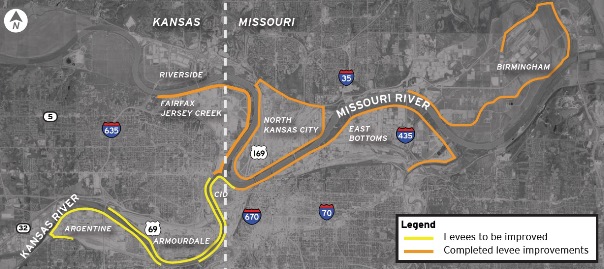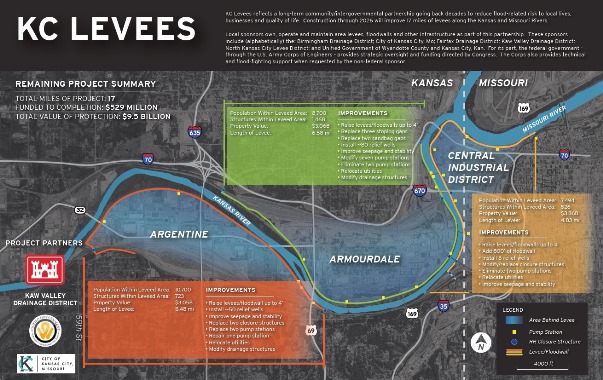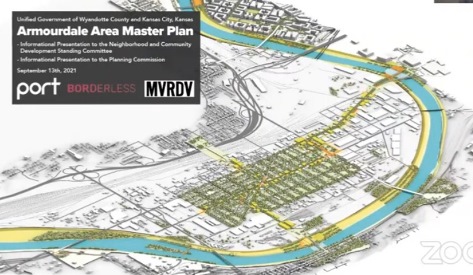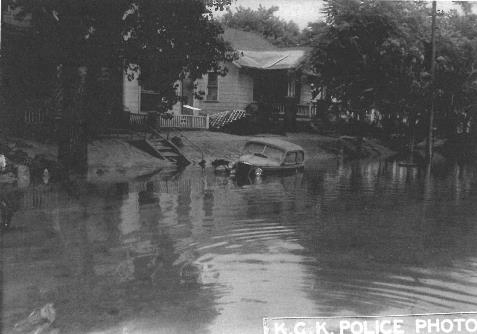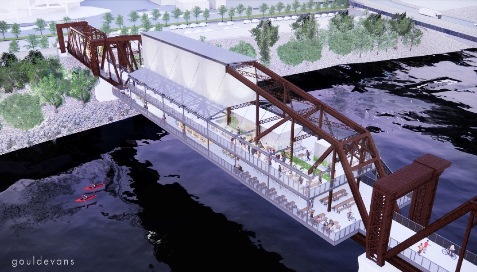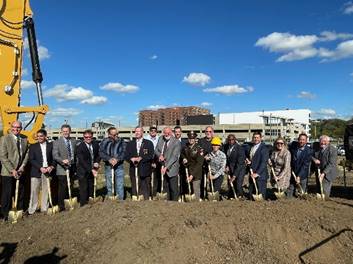
Ground was broken today on a $539 million levee project that is expected to reduce flooding and improve infrastructure along the Missouri and Kansas rivers in the Kansas City area.
The project is scheduled to be completed in 2026, according to officials.
When finished, the project will improve 17 miles of levees along the Kansas and Missouri rivers, protecting 32 square miles of residential, industrial and commercial areas containing 100,000 jobs, 7,000 structures and $25 billion in investments.
The $529 million project received federal funding through the Bipartisan Budget Act of 2018. The collaboration of local communities including Kansas City, Kansas, and Kansas City, Missouri, with the U.S. Army Corps of Engineers and the Kaw Valley Drainage District led to the effort to get the funding legislation passed in Congress.
“Bolstering the levee system in Wyandotte County and surrounding communities is critically important,” Mayor David Alvey said. “These improvements have and will protect the safety of persons who live and work near and behind the floodwalls and levee system, protecting homes, businesses, and billions in property and infrastructure. Improving its reliability and resiliency now ensures these systems perform in future flood events, minimizing the impact on life and property. Moreover, levee enhancements can also act as a catalyst to connecting people, providing new bike and hike paths along the river that expand recreation opportunities and improve quality of life in our communities.”
U.S. Rep. Sharice Davids, vice chair of the House Committee on Transportation and Infrastructure, attended the groundbreaking.
“Kansans and all those who live along the Missouri and Kansas rivers know just how much devastation floods can cause in our communities – and it’s only gotten worse in recent years,” Rep. Davids said. “This new project will invest in our levee infrastructure resulting in safer neighborhoods and new and permanent economic development opportunities for local communities. I am excited for both the immediate and long-term benefits that will follow.”
The Weather Channel has ranked Kansas City the fifth most vulnerable U.S. city to the effects of climate change, particularly flooding. Rep. Davids has advocated for flood safety at the federal level, securing funding for the national levee safety initiative in the FY 2020 appropriations bill and outlining potential solutions to the challenges communities in Kansas are facing in response to extreme weather. Most recently, Rep. Davids, in partnership with local governments, successfully secured the maximum amount of federal funding for the Upper Turkey Creek levee project.
More than 27,000 residents and 2,700 businesses and structures benefit from the reduced risk of potential flooding produced by approximately 32 miles of existing levees and floodwalls along the Kansas and Missouri Rivers in Kansas City, Kansas, and Kansas City, Missouri, according to a UG spokesman.
This system of levee units, which protects the safety and economic vitality of the Argentine, Armourdale, and Central Industrial District (CID) levee units, among others, will be further strengthened by improvements that began construction in 2019.
The levee improvements stem from a 1993 flood event during which water crested near the top of many local levees and floodwalls. This highlighted the need to improve flood infrastructure and reduce risk throughout Greater Kansas City, the UG spokesman stated.
Levee improvements already have taken place in three of the seven local levee units: Fairfax-Jersey Creek, North Kansas City and East Bottoms. Additional improvements will be constructed through 2026 in the Argentine, Armourdale and CID levee units.
